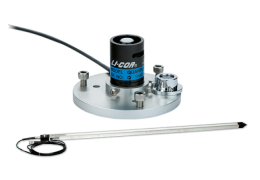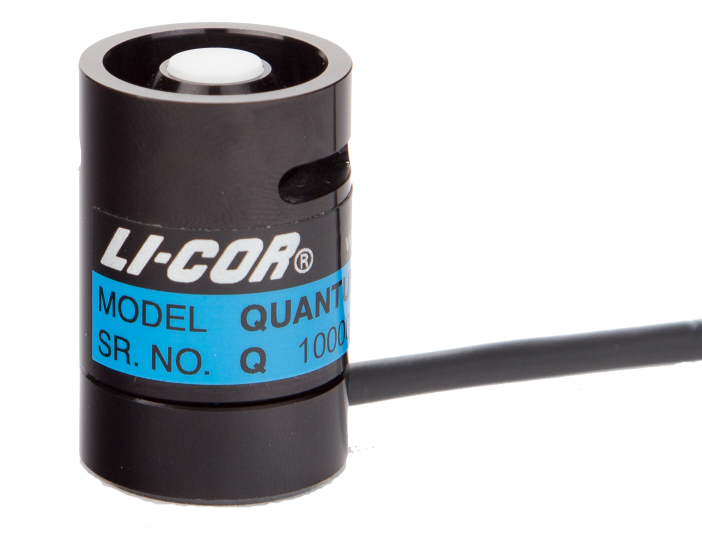
This manual provides basic operating instructions for the LI-190R Quantum Sensor (right) and the LI-191R Line Quantum Sensor and their accessories. LI-COR quantum sensors measure photosynthetically active radiation (PAR) with an enhanced silicon photodiode mounted under a cosine-corrected acrylic diffuser. A custom spectral filter helps achieve the desired spectral response.
The sensor output is a current (μA) signal that is directly proportional to hemispherical PAR. A multiplier is used to convert the current signal into units of radiation (µmol s-1 m-2).
Typical applications for the LI-190R include agriculture, greenhouses, growth chambers, controlled laboratory conditions, and environmental research.
The LI-191R Line Quantum Sensor is designed to measure PAR in applications where the radiation to be measured is spatially non-uniform, such as within plant canopies. The LI-191R spatially averages incident radiation over the 1-meter length of the diffuser, minimizing errors introduced by shadows and sunflecks. The incident radiation passes through the diffuser and is directed uniformly to a single silicon photodiode.
Comparing LI-COR Radiation Sensors
Each LI-COR radiation sensor is optimized for a particular application and measurement type (Table 1‑1). LI-192SA and LI-193SA sensors are submersible, but they can also be used in the atmosphere. The LI-191R Line Quantum Sensor is often used within plant canopies. LI-190R, LI-200R, and LI-210R sensors consist of a sensor head attached to a removable base and cable assembly.


Cable Options for the LI-190R
The detachable base and cable assembly provides benefits including:
- Reduced cost of cable repairs
- The ability to replace or recalibrate a light sensor without removing the cable from the mounting structure
- Cable interchangeability with any LI-190R, LI-200R, or LI-210R sensor head
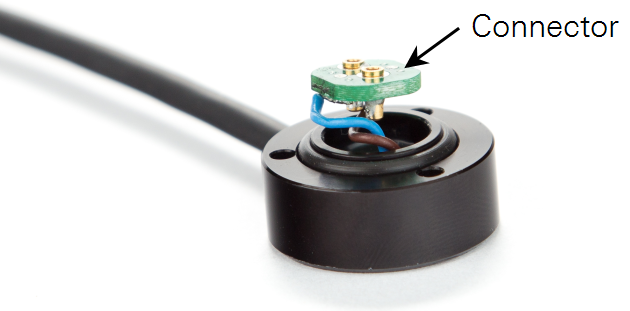
The shielded cable leading from the sensor base terminates with either bare wire leads or a weather-resistant, nickel-plated brass BNC connector (Figure 1‑3). For sensors with a BNC connector, the body of the connector carries a positive signal and is connected to the shield of the cable, while the center conductor is negative. This arrangement reduces electronic interference.
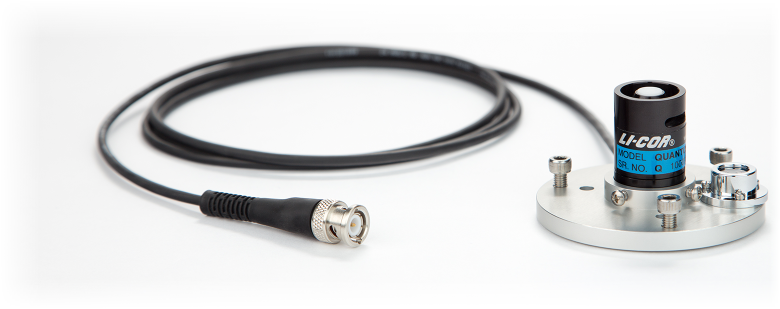
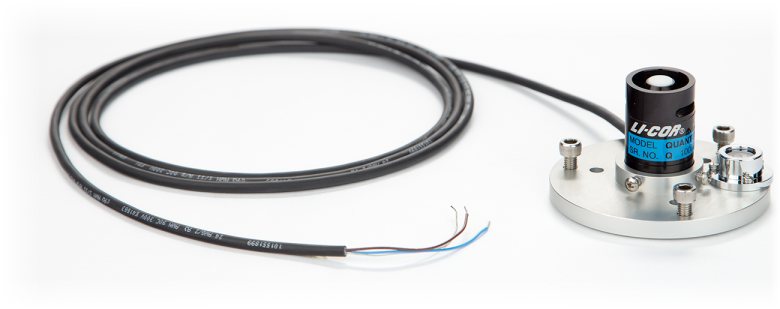
BNC or bare leads (BL) terminal types are available with cable lengths of 2, 5, 15, or 50 meters.
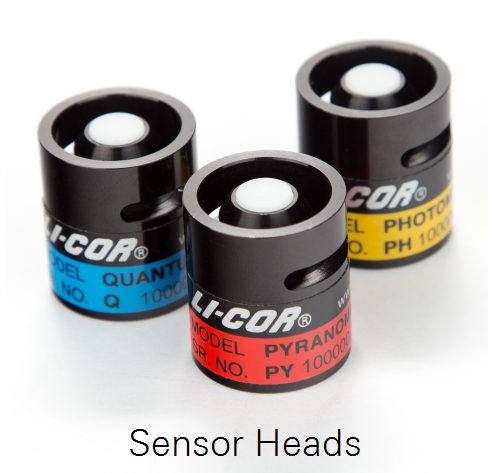
Calibrated LI-190R, LI-200R, or LI-210R sensor heads (without cables) are available for purchase. Sensor heads can replace damaged heads, or be used as spares. Any cable assembly can be used interchangeably with any LI-190R, LI-200R, or LI-210R sensor head.
Cable Options for the LI-191R
The cable for an LI-191R Line Quantum Sensor terminates with a BNC connector on each end. One end connects to the sensor and the other end connects to the logger, meter, or millivolt adapter. The cable for the LI-191R is available in 2-meter or 5-meter lengths.
Accessories
Accessories for use with the LI-190R and LI-191R:
- 2290 Millivolt Adapter. 604 Ω resistance (2290 Millivolt Adapter)
- 2420 Light Sensor Amplifier (2420 Light Sensor Amplifier)
Additional accessories for use with the LI-190R:
- 2003S Mounting and Leveling Fixture. Anodized aluminum with stainless steel leveling screws and a weatherproof spirit level
- 2001S Sensor Base Cover. Anodized aluminum
Configurations
LI-COR Quantum Sensors connect directly to devices that read a current (µA) sensor signal (Table 1‑2). Table 1‑3 lists configurations for producing a voltage signal.
